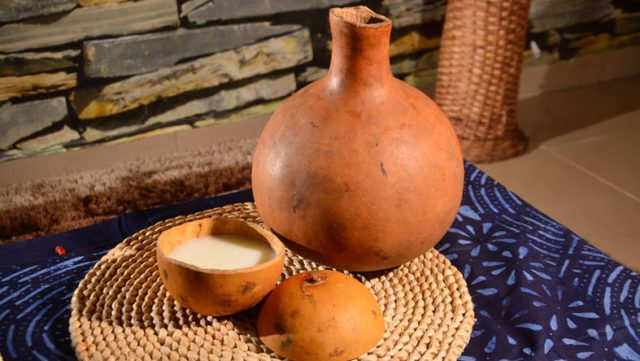
Along the East African coast, in areas where palm trees grew, palm wine was the dominant alcoholic beverage. In Kenya, this traditional alcoholic beverage, better known as Mnazi was and still is popular with the Swahili along the Coastal region.
Palm wine production offered the opportunity to gain income and established an explicit and mutually profitable connection with their neighbors. It represented as a sacred element of the Swahili tradition as the communities used palm wine for all kinds of political occasions as well as for entertainment. In South Easter part of Nigeria, palm wine is symbolic at traditional marriage ceremonies while some term it as the drink of ancestors and elders offered to them as a sign of worship, respect, and great honor.
Today palm wine finds its way into notable occasions both traditional and contemporary as it is used and widely drunk at festivals, funerals, naming- ceremonies and on other special occasions. Only the few who have visited the Coastal region in Kenya or the many that share in their culture and tradition by birth relate best. Here is how Swahilis love their Mnazi.
Collecting the sap
Mnazi is made from sap extracted from palm fruits. Once one has climbed the palm tree the palm fruit is located and the fruit’s kernels as they reside deep inside the fruit. For the record, palm tree and coconut tree are two different species of the same tree. A coconut tree is a type of palm tree, but not all palm trees are coconut trees.
The palm tree is tapped by making an incision between the kernels using a knife or machete and a gourd tied around to collect the sap which is collected a day or two later then transferred into another container. This fresh palm juice can be drunk immediately as it is sweet, clear, and colorless containing some sugar or can be fermented.
Fermentation
The collected palm sap begins fermenting immediately after collection, due to natural yeasts in the air often from residual yeast left in the collecting container. Ideally, any sugary plant sap can be processed into an alcoholic beverage which is the alcoholic fermentation of sugars to yield alcohol and carbon dioxide.
There are two types of Mnazi, distinguished by the fermentation process namely Freshi and Kilalo. Kilalo is generally fermented for more than 24 hours and has an acquired alcohol percentage of 7-8% while Freshi is fermented for less than 24 hours; the fermentation process turns out the freshest Mnazi as sweeter and less alcoholic.
Habitual consumers can recognize the age of the drink by its color and density as it goes from the pale white color after tapping to the cloudy and shady gray of a few days of fermentation.
Health benefits of Palm wine
Palm wine contains a large quantity of iron and vitamin B complex needed for maintaining healthy skin, hair and nails and overall development of growth. It is also used in the treatment of measles and the potassium content of palm wine has been proven to improve heart health and reduce hypertension.
It is also used for industrial purposes following the extraction of its contents such as yeast for baking, and alcohol for the production of portable ethanol. the economic significance of palm wine has equally gained popularity, thriving like other brewing industries.

